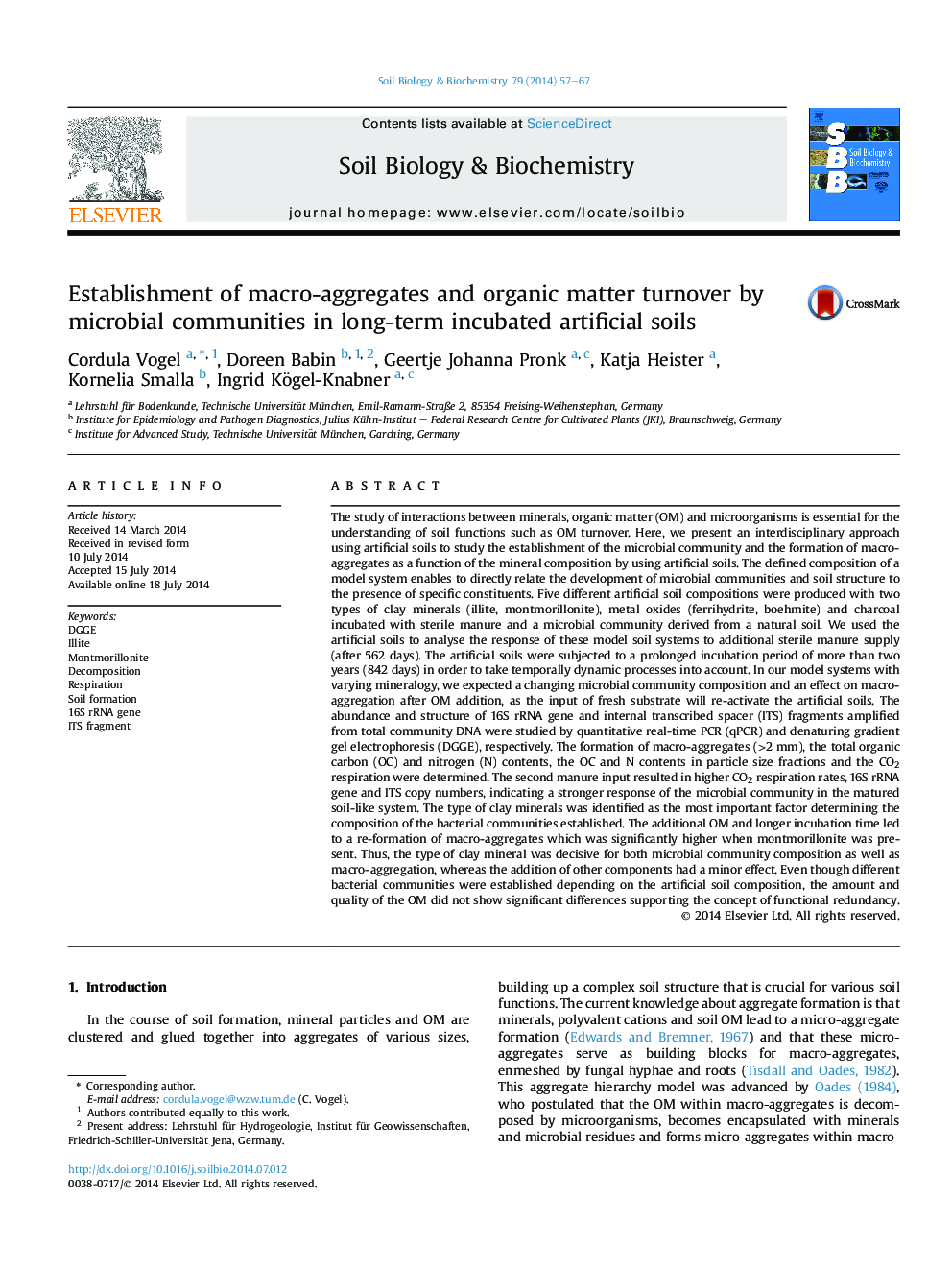| کد مقاله | کد نشریه | سال انتشار | مقاله انگلیسی | نسخه تمام متن |
|---|---|---|---|---|
| 2024640 | 1542605 | 2014 | 11 صفحه PDF | دانلود رایگان |
• Response of artificial soils to organic matter (OM) addition.
• Clay minerals shaped bacterial communities.
• Macro-aggregation depends on clay minerals, not on charcoal or metal oxides.
• Soil composition affects bacterial communities more than sterilised OM input.
• Different bacterial communities show similar functionality for OM decomposition.
The study of interactions between minerals, organic matter (OM) and microorganisms is essential for the understanding of soil functions such as OM turnover. Here, we present an interdisciplinary approach using artificial soils to study the establishment of the microbial community and the formation of macro-aggregates as a function of the mineral composition by using artificial soils. The defined composition of a model system enables to directly relate the development of microbial communities and soil structure to the presence of specific constituents. Five different artificial soil compositions were produced with two types of clay minerals (illite, montmorillonite), metal oxides (ferrihydrite, boehmite) and charcoal incubated with sterile manure and a microbial community derived from a natural soil. We used the artificial soils to analyse the response of these model soil systems to additional sterile manure supply (after 562 days). The artificial soils were subjected to a prolonged incubation period of more than two years (842 days) in order to take temporally dynamic processes into account. In our model systems with varying mineralogy, we expected a changing microbial community composition and an effect on macro-aggregation after OM addition, as the input of fresh substrate will re-activate the artificial soils. The abundance and structure of 16S rRNA gene and internal transcribed spacer (ITS) fragments amplified from total community DNA were studied by quantitative real-time PCR (qPCR) and denaturing gradient gel electrophoresis (DGGE), respectively. The formation of macro-aggregates (>2 mm), the total organic carbon (OC) and nitrogen (N) contents, the OC and N contents in particle size fractions and the CO2 respiration were determined. The second manure input resulted in higher CO2 respiration rates, 16S rRNA gene and ITS copy numbers, indicating a stronger response of the microbial community in the matured soil-like system. The type of clay minerals was identified as the most important factor determining the composition of the bacterial communities established. The additional OM and longer incubation time led to a re-formation of macro-aggregates which was significantly higher when montmorillonite was present. Thus, the type of clay mineral was decisive for both microbial community composition as well as macro-aggregation, whereas the addition of other components had a minor effect. Even though different bacterial communities were established depending on the artificial soil composition, the amount and quality of the OM did not show significant differences supporting the concept of functional redundancy.
Figure optionsDownload as PowerPoint slide
Journal: Soil Biology and Biochemistry - Volume 79, December 2014, Pages 57–67
